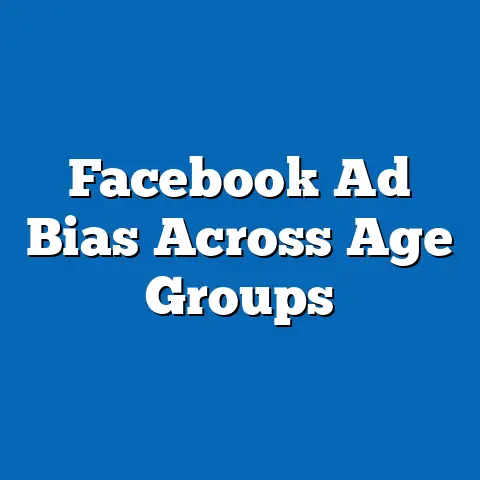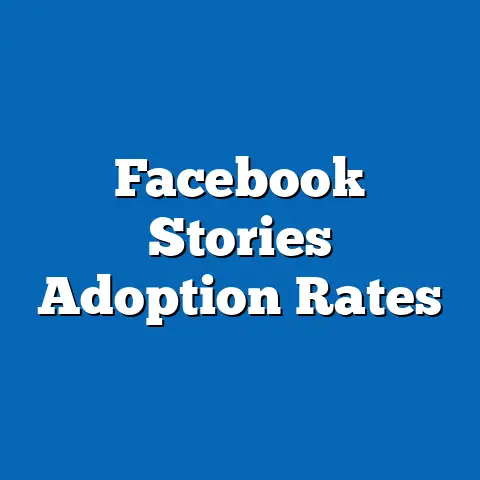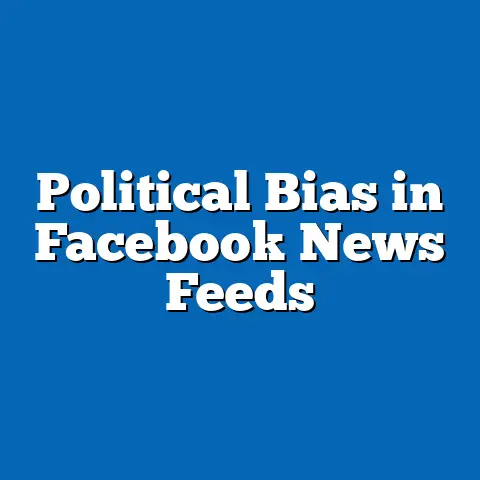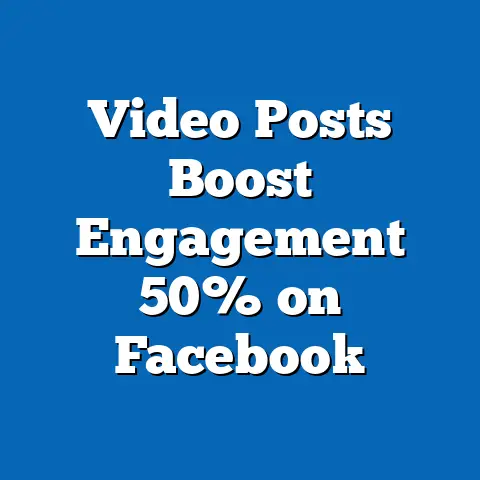Facebook Ad Targeting Precision in Algorithm Stats
In the rapidly evolving landscape of digital marketing, the concept of the “best option” for advertising platforms has emerged as a critical framework for businesses aiming to maximize return on investment (ROI). The “best option” refers to a platform or strategy that offers unparalleled precision in targeting, robust data analytics, scalability, and adaptability to diverse audience segments. Among the myriad of digital advertising tools available today, Facebook (now under Meta) stands out as a leading contender due to its sophisticated ad targeting algorithms and extensive user data, which have redefined how brands connect with consumers.
This concept of the “best option” is not merely about reach but about precision and efficiency—delivering the right message to the right person at the right time. Historically, advertising relied on broad demographic data and mass media channels, often resulting in wasted resources on uninterested audiences. The advent of digital platforms, particularly social media, shifted this paradigm by leveraging user-generated data to create hyper-targeted campaigns, with Facebook pioneering many of these innovations since its ad platform launched in 2007.
The societal implications of this shift are profound. On one hand, precision targeting empowers businesses, especially small and medium enterprises (SMEs), to compete with larger corporations by focusing on niche markets. On the other hand, it raises ethical concerns about privacy, data security, and the potential for manipulation, as seen in high-profile cases like the Cambridge Analytica scandal of 2018. This article delves into the intricacies of Facebook’s ad targeting precision through algorithm stats, exploring its evolution, technical underpinnings, generational impacts, and broader societal consequences.
Historical Context: The Evolution of Facebook Advertising
Facebook’s journey into digital advertising began in 2007 with the introduction of “Facebook Flyers,” a rudimentary ad system targeting college students. This early iteration was limited in scope but laid the groundwork for what would become a revolutionary platform. By 2012, with the launch of Custom Audiences, Facebook allowed advertisers to upload customer data for targeted campaigns, marking a significant leap in precision.
The mid-2010s saw further advancements with the introduction of Lookalike Audiences, which used machine learning to identify users similar to a brand’s existing customers. This period also coincided with the explosion of mobile usage, as smartphones became ubiquitous across generations, providing Facebook with unprecedented access to real-time location data and behavioral insights. These innovations positioned Facebook as a leader in the “best option” race, outpacing competitors like Google in certain metrics due to its focus on social engagement and personal data.
Significant events, such as the 2016 U.S. presidential election and the subsequent Cambridge Analytica scandal, brought scrutiny to Facebook’s data practices. The misuse of user data for political ads highlighted the double-edged nature of precision targeting, prompting regulatory responses like the European Union’s General Data Protection Regulation (GDPR) in 2018. Despite these challenges, Facebook adapted by refining its algorithms and transparency measures, maintaining its dominance in the ad space.
Defining Characteristics of Facebook’s Ad Targeting Precision
At the core of Facebook’s status as a “best option” for advertisers is its algorithmic precision, driven by a combination of user data, machine learning, and real-time optimization. The platform collects vast amounts of data—demographics, interests, behaviors, and connections—from its 2.9 billion monthly active users (as of 2023, per Meta’s reports). This data is processed through algorithms that predict user behavior and segment audiences with remarkable accuracy.
Key characteristics include the ability to target based on granular details, such as life events (e.g., engagements or new jobs), purchase history, and even inferred interests derived from likes and shares. Additionally, Dynamic Ads automatically tailor content to individual users, while the Facebook Pixel tracks off-platform behavior, enabling retargeting with high conversion potential. According to a 2022 study by eMarketer, Facebook’s ad platform achieves a 9.21% average click-through rate (CTR) for retargeted ads, significantly higher than industry benchmarks of 0.5-1%.
Another defining feature is scalability. Whether a business targets a local community or a global audience, Facebook’s tools—such as Automated Ads and Campaign Budget Optimization—adjust to varying budgets and goals. This adaptability makes it a versatile choice across industries, from e-commerce to political campaigns, reinforcing its “best option” status.
Algorithm Stats: Unpacking the Numbers Behind Precision
To understand the effectiveness of Facebook’s ad targeting, a closer look at algorithm statistics is essential. Meta’s proprietary algorithms process billions of data points daily, using machine learning models like Deep Neural Networks (DNNs) to predict user engagement. A 2021 report by Statista revealed that Facebook’s ad revenue reached $114.9 billion, with 97% attributed to targeted advertising, underscoring the financial impact of its precision capabilities.
One critical metric is the Relevance Score (now replaced by Ad Quality metrics), which historically rated ads from 1 to 10 based on predicted user engagement. Ads with higher scores cost less per click, incentivizing advertisers to create relevant content. Studies from Hootsuite in 2022 indicate that ads optimized for relevance achieve up to 30% lower cost-per-acquisition (CPA) compared to poorly targeted campaigns.
Furthermore, Facebook’s Lookalike Audiences feature boasts a match rate of over 90% in identifying similar users, per internal Meta data shared in marketing webinars. This capability is powered by algorithms that analyze hundreds of variables, from browsing history to social interactions, ensuring high-probability matches. However, these stats also highlight a potential downside: over-reliance on algorithmic predictions can lead to “filter bubbles,” where users are repeatedly exposed to similar content, limiting diversity of thought.
Generational Dynamics in Facebook Ad Targeting
Facebook’s user base spans multiple generations, each with distinct behaviors and preferences that influence ad targeting strategies. Understanding these generational dynamics is crucial for advertisers aiming to optimize campaigns and for society grappling with the platform’s impact.
Baby Boomers (Born 1946-1964)
Baby Boomers, often considered late adopters of technology, have increasingly embraced Facebook, with 70% of U.S. Boomers active on the platform as of 2023 (Pew Research Center). They value trust and familiarity, often engaging with ads for health products, travel, and family-oriented services. Targeting this group requires straightforward messaging and a focus on security, as privacy concerns are paramount for many Boomers shaped by pre-digital norms.
However, their lower tech-savviness can result in lower CTRs compared to younger cohorts. Advertisers must balance precision with accessibility, avoiding overly complex ad formats. Societally, the rise of misinformation targeting Boomers—seen in political ad controversies—poses challenges for platform regulation and user education.
Generation X (Born 1965-1980)
Gen X, the “forgotten generation” in marketing, represents a pragmatic and independent demographic on Facebook, with 77% active users in the U.S. (Statista, 2023). Shaped by economic recessions and the early internet, they are discerning consumers who respond to value-driven ads for financial services, home improvement, and nostalgia-driven content. Facebook’s targeting excels here by leveraging life event data, such as homeownership or parenting milestones, to deliver relevant campaigns.
Gen X’s balanced approach to technology—they are neither digital natives nor complete novices—makes them a stable target for advertisers. Yet, their skepticism toward overt marketing means ads must prioritize authenticity over gimmicks. Their influence in workplace leadership roles also positions them as key decision-makers, amplifying the economic impact of targeted campaigns.
Millennials (Born 1981-1996)
Millennials, often dubbed digital pioneers, are a prime target for Facebook ads, with 84% active on the platform globally (eMarketer, 2023). Having grown up during the internet boom, they are comfortable with technology and responsive to visually engaging, mobile-optimized ads for lifestyle products, experiences, and social causes. Facebook’s algorithm stats show a 12% higher engagement rate for video ads among Millennials compared to other formats.
Economic factors, such as student debt and delayed homeownership, shape their purchasing behavior, making cost-effective, value-driven campaigns effective. However, their diversity in values and skepticism of corporate motives require nuanced targeting—blanket approaches often fail. Societally, Millennials’ role as cultural influencers means ads targeting them can shape broader trends, for better or worse.
Generation Z (Born 1997-2012)
Gen Z, the true digital natives, presents both opportunities and challenges for Facebook ad targeting. While only 60% use Facebook compared to 90% on Instagram (Pew Research, 2023), their presence is growing, especially for niche interests. Shaped by smartphones and social media, they prioritize authenticity, diversity, and interactivity, often engaging with ads featuring user-generated content or influencer partnerships.
Facebook’s algorithms struggle slightly with Gen Z due to their preference for ephemeral platforms like TikTok, but features like Stories Ads show promise with a 15% higher CTR among this group (Meta, 2022). Privacy concerns are also heightened for Gen Z, who grew up post-GDPR and are wary of data overreach. Societally, targeting Gen Z raises ethical questions about influencing young, impressionable minds, necessitating responsible ad practices.
Technological Factors Driving Precision
Facebook’s ad targeting precision is underpinned by cutting-edge technology, particularly machine learning and artificial intelligence (AI). The platform’s algorithms continuously learn from user interactions, refining predictions for ad placement and content relevance. The integration of the Facebook Pixel and Conversions API allows for cross-platform tracking, ensuring advertisers can measure ROI with high accuracy.
Mobile technology has been a game-changer, with 98.5% of Facebook’s ad revenue coming from mobile devices in 2022 (Meta Financial Reports). This shift reflects broader societal trends toward on-the-go consumption, enabling real-time targeting based on location and context. However, technological advancements also bring challenges, such as Apple’s iOS 14.5 update in 2021, which introduced App Tracking Transparency (ATT) and reduced Facebook’s ability to track users across apps, costing Meta an estimated $10 billion in revenue.
Economic and Social Impacts of Precision Targeting
Economically, Facebook’s ad platform has democratized marketing by allowing businesses of all sizes to reach targeted audiences with minimal budgets. SMEs, which account for 90% of businesses on Facebook (Meta, 2023), benefit from low entry costs and high precision, driving local and global commerce. A 2022 Deloitte study found that for every $1 spent on Facebook ads, businesses see an average return of $4.30, highlighting the platform’s economic efficiency.
Socially, however, the implications are more complex. Precision targeting can foster community by connecting like-minded individuals, but it also risks deepening societal divides through algorithmic bias. For instance, a 2019 study by ProPublica revealed that housing ads on Facebook were disproportionately shown to certain racial groups, raising discrimination concerns. Such issues underscore the need for ethical guidelines and transparency in algorithmic decision-making.
Cultural Influences and Generational Responses
Culturally, Facebook’s ad targeting reflects and shapes societal values, often amplifying generational differences. For Boomers, ads often evoke nostalgia, aligning with cultural touchstones like classic music or family traditions. Millennials and Gen Z, conversely, drive trends toward sustainability and inclusivity, pushing brands to align with social justice themes in targeted campaigns.
These cultural shifts are not uniform within generations, as socioeconomic status, geography, and personal experiences create diverse responses. A 2021 Nielsen report noted that 65% of Millennials value brand purpose in ads, compared to 40% of Boomers, illustrating how cultural priorities influence engagement. Advertisers must navigate these nuances to avoid alienating segments of their audience, balancing precision with broad appeal.
Workplace Implications: Targeting Professional Audiences
In the workplace, Facebook’s ad targeting extends beyond consumer goods to professional services, recruitment, and B2B marketing. LinkedIn may dominate professional networking, but Facebook’s 2.9 billion users offer unmatched reach for job ads and corporate branding. Features like Workplace by Meta integrate professional targeting, allowing companies to reach employees and decision-makers with precision.
Generational differences play a significant role here. Gen X and Millennials, often in managerial roles, respond to ads for leadership training or SaaS products, while Gen Z entering the workforce engages with career development content. A 2022 SHRM report found that 30% of HR professionals use Facebook for recruitment, with targeted ads reducing hiring costs by 25% compared to traditional methods. However, workplace targeting must address privacy concerns, as employees may resent intrusive professional ads.
Ethical Considerations and Societal Challenges
The precision of Facebook’s ad targeting raises critical ethical questions about privacy, consent, and societal impact. The Cambridge Analytica scandal exposed how data could be weaponized for political influence, prompting a 2018 Pew survey where 74% of Americans expressed concern over social media data usage. Subsequent regulations like GDPR and the California Consumer Privacy Act (CCPA) aim to protect users, but enforcement remains inconsistent.
Algorithmic bias is another challenge. A 2020 study by the University of Southern California found that Facebook’s ad delivery system sometimes perpetuates gender and racial stereotypes, even when advertisers intend neutrality. Societally, this can reinforce inequalities, necessitating ongoing audits and transparency measures from Meta. Balancing precision with fairness remains a key tension in the “best option” debate.
Forward-Looking Insights: The Future of Facebook Ad Targeting
Looking ahead, the future of Facebook’s ad targeting precision will be shaped by technological, regulatory, and societal trends. The rise of AI-driven personalization promises even greater accuracy, with Meta investing heavily in generative AI for ad creation (per 2023 earnings calls). However, privacy regulations and user pushback may limit data collection, forcing reliance on first-party data and contextual targeting.
Generational shifts will also play a role. As Gen Z becomes a larger economic force and Gen Alpha (born post-2012) enters the digital space, advertisers must adapt to new platforms and values. A 2023 Forrester report predicts that by 2030, 40% of ad spend will shift to platforms prioritizing user control over data, challenging Facebook’s current model.
Uncertainty remains around global regulations and public trust. Will Meta pivot to a privacy-first approach, or will it double down on data-driven precision? The answer will determine whether Facebook retains its “best option” status. For now, its algorithmic prowess offers unparalleled opportunities for advertisers, but ethical and societal considerations must guide its evolution.
Conclusion
Facebook’s ad targeting precision, underpinned by sophisticated algorithms and vast user data, exemplifies the “best option” concept in digital marketing. Its ability to deliver tailored content across generations—from Baby Boomers to Gen Z—has transformed advertising, driving economic growth and cultural influence. Algorithm stats, such as high CTRs and low CPAs, underscore its effectiveness, while technological innovations like AI and mobile optimization fuel its dominance.
Yet, this precision comes with trade-offs. Privacy concerns, algorithmic bias, and societal divides highlight the need for responsible use and robust regulation. As generational dynamics evolve and new challenges emerge, Facebook must navigate a complex landscape to maintain its position. By balancing innovation with ethics, it can continue to shape the future of advertising while addressing the diverse needs of a global audience.






